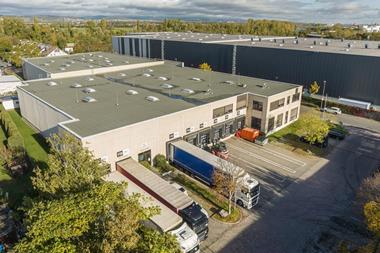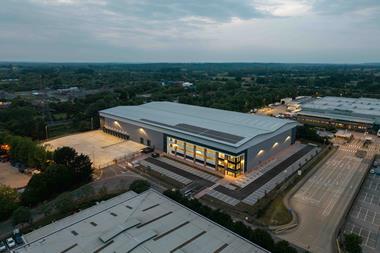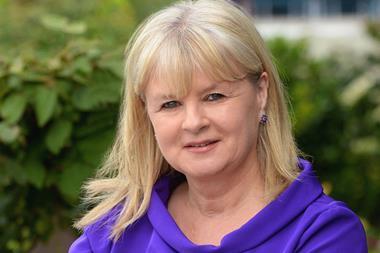Evolving US tariffs are driving a realignment of global trade and real asset investment, writes Paul Gibson

The US administrationŌĆÖs evolving tariff regime is reshaping global trade dynamics and, in doing so, accelerating a recalibration of real asset investment strategies.
As Washington advances a more transactional, domestically focused industrial strategy, global institutional capital is increasingly turning to Europe for attractive risk-adjusted returns, governance clarity and sustainability leadership.
Capital flows recalibrate toward Europe
In late 2024 and early 2025, investor confidence had been returning across European real estate markets with improving capital flows and signs of a recovering transaction market.
As we entered Q2, however, US tariff escalations and separate geopolitical instability blunted the momentum. Some decision-making temporarily paused, but improved clarity on US policy has renewed interest in allocating capital to European markets, particularly markets offering accretive financing, stable yields and favourable supply-demand dynamics.
Non-US institutional investors ŌĆō particularly from Canada and Asia ŌĆō are increasing allocations to Europe as a portfolio stabiliser, while European investors are exploring widening allocations across the continent. For example, Asian capital is concentrating in core sectors within western and northern European gateway cities, with liquidity consolidating into best-in-class assets.
By contrast, Canadian pension institutions may prove more flexible, broadening exposures beyond prime offices and logistics into alternatives such as life sciences, student accommodation, multifamily and self-storage. European investors are selectively moving southward, particularly to Spain and Italy.
This capital reallocation is mirrored in shifting occupier dynamics, where trade-sensitive sectors are reassessing their European footprints. With the prospect of supply chain realignment, the logistics sector remains a focal point. Inland distribution hubs and urban infill assets are better insulated from global trade volatility than port-driven locations.
Trade-dependent economies may face headwinds in sectors like pharmaceuticals, manufacturing and high-tech machinery, where exposure to global supply chains is highest. The recent surge in logistics leasing is driven by ŌĆśjust-in-caseŌĆÖ inventory strategies, nearshoring manufacturing and expanding e-commerce operations.
Strategic hubs such as France, Poland and Spain are emerging as alternative manufacturing and R&D hubs, supported by skilled labour, regulatory stability and limited US trade exposure. Cities like Paris, Berlin and Madrid are attracting renewed investor attention, while Bavaria and Nouvelle-Aquitaine benefit from defence infrastructure-linked real estate demand.
Sustainability and decarbonisation: EuropeŌĆÖs strategic advantage
EuropeŌĆÖs leadership in sustainability is becoming a key differentiator. At MIPIM 2025, Mario Draghi positioned the energy transition as a cornerstone of EuropeŌĆÖs future economic resilience and political sovereignty. ŌĆ£Decarbonisation,ŌĆØ Draghi argued, ŌĆ£is a great occasion for Europe to decrease our historical energy dependenceŌĆØ.
For institutional investors, EuropeŌĆÖs evolving regulatory regime ŌĆō from the EU Taxonomy to the Carbon Border Adjustment Mechanism ŌĆō is no longer viewed as a compliance burden but as a source of portfolio resilience. In a world where capital access, supply chain resilience and tenant preferences are shaped by sustainability, EuropeŌĆÖs regulatory clarity and first-mover status are proving increasingly attractive.
These priorities are now embedded in investor due diligence. Sustainability is no longer simply a box-ticking exercise for investors but a core driver of investment decisions. As global capital tilts toward regulatory certainty, sustainability, and resilience, EuropeŌĆÖs best-in-class real assets are gaining a structural edge for the next investment cycle.
Conclusion
As global capital seeks resilience and regulatory clarity, Europe is no longer just a defensive play ŌĆō itŌĆÖs a strategic imperative.
With the highest return outlook across regions and an overweight position in CBRE IMŌĆÖs global model portfolio, Europe is poised for a favourable investment vintage, supported by attractive financing, fiscal stimulus and sustainability leadership.
To read the latest 91┤½├Įį┌Ž▀ magazine click here.






![Savigny-le-Temple [Barings Real Estate]](https://d15duu1h3gsd2d.cloudfront.net/Pictures/380x253/9/0/1/1331901_savignyletemplebaringsrealestate_21628_crop.jpg)










